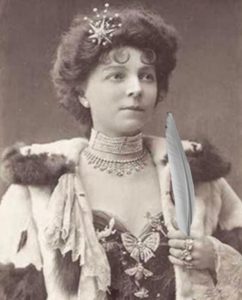1921: Jellicoe Hall
December 4, 2020
By AHNZ
On August 10th, 1921, the Christchurch Returned Soldiers Club opened up their new HQ: Jellico Hall.
It was, of course, named for New Zealand’s next Governor General, Lord Jellico, who was there to open the new building. Admiral Lord Jellicoe was also there in September 1919 to lay the foundation stone at the beginning of the build. At that time he was in command of a Royal Navy fleet touring the British Empire, including the HMS New Zealand as the flagship. With the 1919 General Election right around the corner I’m sure Prime Minister Ward expected some political mileage out of this ship’s visit but it certainly didn’t save his regime.
“…‘Keynsian’ tricks of throwing huge lolly scrambles to be paid for by putting Kiwis into debt. One huge example was his unilateral election gimmick of commissioning a battleship called the HMS New Zealand and gifting it to Britain- all paid for by putting taxpayers into more debt (£2,000,000) for a bit of political glory.”- 1930: Death of Joseph Ward
Christchurch Returned Soldiers Club
 The Christchurch Returned Soldiers Club, or Christchurch Returned Services Association (RSA,) as it came to be known, was the first RSA in New Zealand. Established 22 December, 1915, they pre-date the national RSA of 1916. They only had to wait until 1921 for Jellicoe Hall to be ready at Gloucester Street in the central city. I suppose the Hall lasted until the late 1960s or early 1970s when it was, I assume, replaced and added to by the Victoria Cross Restaurant. Those building/s came to their end owing to the Great Canterbury Earthquake of 2011.
The Christchurch Returned Soldiers Club, or Christchurch Returned Services Association (RSA,) as it came to be known, was the first RSA in New Zealand. Established 22 December, 1915, they pre-date the national RSA of 1916. They only had to wait until 1921 for Jellicoe Hall to be ready at Gloucester Street in the central city. I suppose the Hall lasted until the late 1960s or early 1970s when it was, I assume, replaced and added to by the Victoria Cross Restaurant. Those building/s came to their end owing to the Great Canterbury Earthquake of 2011.
Victimhood Culture of the Great Wrong War
 Jellicoe Hall, and the Christchurch RSA itself, owes its creation to the grateful people of post-Great War Christchurch. The Hall cost £13,000 of which much was contributed by the Lady Liverpool Fund ladies. Huge efforts were made on the home front to equip and supply the Expeditionary Forces New Zealand sent away to the Great War, especially by bourgeois women. In a healthy dose, this is usual and essential cooperation which a nation depends upon and most especially in a time of war. New Zealand women supplied the White Feathers to shame men into enlisting, they sent them provisions while they fought and died, and they furnished the survivors with RSA clubrooms and homes for the crippled¹.
Jellicoe Hall, and the Christchurch RSA itself, owes its creation to the grateful people of post-Great War Christchurch. The Hall cost £13,000 of which much was contributed by the Lady Liverpool Fund ladies. Huge efforts were made on the home front to equip and supply the Expeditionary Forces New Zealand sent away to the Great War, especially by bourgeois women. In a healthy dose, this is usual and essential cooperation which a nation depends upon and most especially in a time of war. New Zealand women supplied the White Feathers to shame men into enlisting, they sent them provisions while they fought and died, and they furnished the survivors with RSA clubrooms and homes for the crippled¹.
“War! There is no conception more inspiring, no condition nobler, no call that rings more grandly in the ears.”- NZ Herald, 8 August, 1914
 Governor General Jellicoe’s predecessor, Lord Liverpool, was our Sovereign’s Representative when New Zealand declared war on Germany on 5 August, 1914. The very next day, Lady Liverpool put out a memo to all New Zealand women calling on them to chip in to provide for an army of citizens, to form a committee to do so in every centre and raise funds for the war. The women of Christchurch answered this call, probably very measurably more than any other city. They organised, they met, knitted, collected eggs, sorted out uniforms, held fairs, recycled, shipped off car packs, formed committees and then they formed a federation of those committees. They became a machine!
Governor General Jellicoe’s predecessor, Lord Liverpool, was our Sovereign’s Representative when New Zealand declared war on Germany on 5 August, 1914. The very next day, Lady Liverpool put out a memo to all New Zealand women calling on them to chip in to provide for an army of citizens, to form a committee to do so in every centre and raise funds for the war. The women of Christchurch answered this call, probably very measurably more than any other city. They organised, they met, knitted, collected eggs, sorted out uniforms, held fairs, recycled, shipped off car packs, formed committees and then they formed a federation of those committees. They became a machine!
“Bureaucracy expands to keep up with the needs of an expanding bureaucracy”- Asimov
“With World War One definitely over, the War Funds committees had to make decisions about what to do with the substantial amounts of money still in their possession. Consquently, the Lady Liverpool Fund committee, WCTU and Red Cross members decided to re-form in June 1921 to provide clothing and other assistance over winter to families identified by the Social Welfare Guild and hospitals as being in need.”- Thomas (2016)
 After the War what were these women to do? They had created a well-funded, well-respected, powerful social and material position for themselves. They had a hierarchy of organisations, a busy lifestyle of ordering people about and attending gala dinners for a purpose that had ended on the 11th hour of the 11th day of the 11th month of 1918. Did Armistice Day mean an armistice for this way of life? Could these women go Cold Turkey on Bloody Gallipoli?
After the War what were these women to do? They had created a well-funded, well-respected, powerful social and material position for themselves. They had a hierarchy of organisations, a busy lifestyle of ordering people about and attending gala dinners for a purpose that had ended on the 11th hour of the 11th day of the 11th month of 1918. Did Armistice Day mean an armistice for this way of life? Could these women go Cold Turkey on Bloody Gallipoli?
Of course they could not! What started out as post-war Dignity Culture, beneficial bureaucracy, metastasised as it always does into toxic Victimhood Culture. Deprived of a martial purpose, the ladies found a new one. They would reform as a social welfare organisation for the 1920s. On the Moral Cultures clock this was right on time, being 20 years since Dominion Victimhood Culture and 40 years since Kate Shepherd Victimhood Culture.
“Throughout its history Christchurch has been as famous for its cranks and zealots as it has been for its Englishness and its class distinctions. This is not to suggest that other cities are devoid of eccentrics and fanatics, it’s just that in most places, if they are not insulted, assaulted, or ignored, they are, more often than not, patted on the head and told to keep taking the pills. But Christchurch is a place where messianic zealots gather a following, attract influential patrons and go on to change the world.”- Hood (2001)
In June 1921, long after Armistice 1918, the Victimhood Culture women decided to reform but their new theme would be messianic. They had gone from being empowered to seeking out people, victims, to save and to be powerful for by proxy. For example, Canterbury Women’s Club (CWC est. 1913) began as a Dignity Culture organisation to support women interested in arts and literature in their own space (clubrooms located in the Grand Theatre of Cathedral Square.) By the 1920s the CWC had become a federation of 10 other autonomous Christchurch women’s organisations! It had gone from a Dignity Culture intellectual salon to a Victimhood Culture coven.
“…she believed woman’s united action would safeguard the welfare of woman and children, and women’s work was more valued since the war began than ever before. The Council aimed to educated women about safeguarding themselves and their children…”- Thomas (2016)
 The 1920s Victimhood Culture is readily recognisable because the C21st version isn’t too different. Women (usually women not men) puff themselves up by championing for ‘victims’ whose grievances are like gold to them because they can be converted into purpose and social standing. They find an outlet for their maternal protective energy in ‘saving’ the sick, the poor, the children, women, animals, minorities. Just as the Christchurch Women’s Council, Canterbury Women’s Club, Christchurch Social Hygiene Society, Women’s Teachers’ Association, etc etc cried out for relief for these groups so do their modern contemporaries. The outrage of 2010s ‘Me Too’ and the contrived “gender-pay gap” are no more than re-tread versions of similar scripts that play out every 20 years or so. Another hallmark is that these women are terrific snobs and love to dress up and associate with celebrities² and nobility.
The 1920s Victimhood Culture is readily recognisable because the C21st version isn’t too different. Women (usually women not men) puff themselves up by championing for ‘victims’ whose grievances are like gold to them because they can be converted into purpose and social standing. They find an outlet for their maternal protective energy in ‘saving’ the sick, the poor, the children, women, animals, minorities. Just as the Christchurch Women’s Council, Canterbury Women’s Club, Christchurch Social Hygiene Society, Women’s Teachers’ Association, etc etc cried out for relief for these groups so do their modern contemporaries. The outrage of 2010s ‘Me Too’ and the contrived “gender-pay gap” are no more than re-tread versions of similar scripts that play out every 20 years or so. Another hallmark is that these women are terrific snobs and love to dress up and associate with celebrities² and nobility.
Least you should think that the work that went into Jellicoe Hall was its own reward, the Lady Liverpool Fund donation cheque was framed and hung in the entry foyer for all to see. So was the accompanying letter from committee chair Mrs Jane Holland (wife of the Christchuch mayor) least anyone forget whom to thank. Also, to the glory of the executive committee of the Lady Liverpool Fund, all their names were inscribed in a tablet within Jellicoe Hall itself.
Addendum: The Christchurch RSA
Jellicoe Hall is no more but the Christchurch RSA still meet at the same location between Armagh and Gloucester streets. Their successor building (probably not the direct successor) came down after the 2011 earthquake to be replaced by a grandly designed $8,000,000 palace. Things aren’t working out so well for that…
“New Zealand’s oldest RSA has ordered an urgent review after fears its flagship $6.5 million bar and restaurant business faces financial ruin.”- Newstalk ZB (2019)
“The Christchurch Memorial RSA (CMRSA) is proposing to sell its new $8 million headquarters amidst allegations of mismanagement and obstruction.”- Stuff (2020)
The 1920s society women kept on enabling the needy above and beyond healthy support, including handing the CMRSA its Hall. They didn’t know when to stop and neither did the CMRSA itself. They existed to serve three generations of returned servicemen (Boer War, Great War, WW2) who have now passed. It was a closed shop and for a long time even servicemen returned from Korea or Vietnam might not be welcome. Even so, New Zealand has no population of returned servicemen these days to warrant lavish clubs or restaurants. The best an RSA can do is to try to enter the market with museums and restaurants trying to make its heritage into a goodwill feature not a weird quirk. It’s an identity crisis that this RSA has not been able to resolve and so, like the Victimhood fairy godmothers from 1921, the culture has become toxic.
—
1 Eg. Rannerdale Home, Papanui, Christchurch
2 Eg. The Canterbury Women’s Club made a guest of Agatha Christie
Image ref. RSA in 2007; Google maps
Image ref. RSA c.1921; S.H. Head, Alexander Turnbull Library
Image ref. “But now your country calls you to play your part in war, and no matter what befalls you we shall love you all the more,” The White feather Movement: Vesta Tilley Postcard; More Than A War
Image ref. Color Praeterita; Facebook (2018)
Ref. May Your Shadow Never Grow Less, Helen Thomas (2016)
Ref. A City Possessed, The Christchurch Civic Creche Case, Lynley Hood (2001)
 Like Comment Share
Like Comment Share






